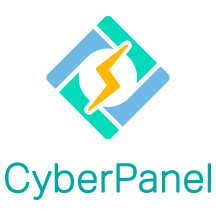Learn how to fix the ”Let’s Encrypt Not Working” CyberPanel error. Our CyberPanel Support team is here to help you with your questions and concerns.
“Let’s Encrypt Not Working” CyberPanel Error | Troubleshooting
 Most CyberPanel users run into the error “Let’s Encrypt not working”.
Most CyberPanel users run into the error “Let’s Encrypt not working”.
According to our experts, this error signals an issue in obtaining an SSL certificate for a domain using Let’s Encrypt.
This error may present itself in several ways, including receiving a success message without a valid certificate being issued or encountering issues with HTTPS access.
Today, we are going to explore the impacts, common causes, fixes, and preventive measures for this issue.
An Overview:
- Impacts of the Error
- Common Causes and Fixes
- 1. DNS Configuration Issues
- 2. Rate Limiting by Let’s Encrypt
- 3. Folder Permissions
- 4. ModSecurity Blocking
- 5. Self-Signed Certificate Generation
- 6. OpenSSL Misconfiguration
- 7. Firewall or Security Software Interference
- Prevention Strategies
Impacts of the Error
- Without a valid SSL certificate, data exchanged between the server and users remains unencrypted, making it vulnerable to interception.
- Browsers display warnings about insecure connections, which can erode user confidence and lead to traffic loss.
- Misconfigured SSL settings can disrupt email delivery, impacting communication.
Common Causes and Fixes
1. DNS Configuration Issues
Incorrect DNS records prevent Let’s Encrypt from validating domain ownership.
Fix:
- First, go to the CyberPanel dashboard and log in.
- Then, verify the server’s IP displayed in CyberPanel.
- Use tools like “What’s My DNS” https://www.whatsmydns.net to confirm the A record points to the correct IP.
- Next, correct the A record in our domain registrar’s DNS management panel. Allow up to 48 hours for propagation.
- Then, go to DNS > Create DNS Zone and enter the domain name.
- Now, head to DNS > Add/Delete Records.
- Finally, add an “A” record with `@` as the name and our server’s IP.
2. Rate Limiting by Let’s Encrypt
Exceeding the SSL issuance limit for a domain (5 certificates per week).
Fix:
- First, check existing certificates:
certbot certificates - Then, revoke unused certificates:
certbot revoke --cert-path /path/to/certificate.pem - Next, retry SSL issuance after a week.
- Finally, go to Websites > Manage, select our website, and issue a new SSL certificate.
3. Folder Permissions
Incorrect permissions on web directories prevent verification by Let’s Encrypt.
Fix:
- First, head to Websites > List Websites, then select Manage for our site.
- Then, check and adjust permissions:
- Directories: `chmod 755 /path/to/directory`
- Files: `chmod 644 /path/to/file`
4. ModSecurity Blocking
ModSecurity blocks legitimate requests from Let’s Encrypt.
Fix:
- Here, we have to disable ModSecurity temporarily. So, go to Security > ModSecurity and toggle it off.
- Then, retry issuing the SSL certificate in CyberPanel.
- Once successful, turn it back on for security.
5. Self-Signed Certificate Generation
When Let’s Encrypt fails, CyberPanel generates a self-signed certificate instead.
Fix:
- Check logs :
cat /var/log/letsencrypt/letsencrypt.log - Then, fix any DNS or other issues identified.
- Now, go to CyberPanel and attempt to issue the SSL certificate again.
6. OpenSSL Misconfiguration
An outdated or misconfigured OpenSSL version can cause failures.
Fix:
- Check OpenSSL version with this command:
openssl version - Then, update OpenSSL:
sudo apt update && sudo apt upgrade openssl - Next, restart the Web Server:
sudo systemctl restart apache2 # For Apache
sudo systemctl restart nginx # For Nginx
7. Firewall or Security Software Interference
Firewalls or security settings block access to Let’s Encrypt servers.
Fix:
- Allow Ports 80 and 443:
sudo ufw allow out 80/tcp
sudo ufw allow out 443/tcp
- Then, test connectivity:
curl -I https://acme-v02.api.letsencrypt.org/directory
Prevention Strategies
- Ensure DNS records consistently point to the correct IP.
- Update CyberPanel, OpenSSL, and related components regularly.
- Avoid unnecessary SSL issuance attempts to stay within Let’s Encrypt rate limits.
- Save backups of critical files to revert to a stable configuration quickly.
- Use tools like SSL Labs’ SSL Test https://www.ssllabs.com/ssltest/ to ensure optimal SSL settings.
- Maintain a log of changes to server configurations to simplify troubleshooting.
[Need assistance with a different issue? Our team is available 24/7.]
Conclusion
Fixing the “Let’s Encrypt not working” CyberPanel error requires identifying the root cause, from DNS misconfigurations to software updates. By following the steps and adopting preventive measures, the SSL certificates will be issued seamlessly, keeping our site secure and trusted by users.
In brief, our Support Experts demonstrated how to fix the ”Let’s Encrypt Not Working” CyberPanel error.







0 Comments